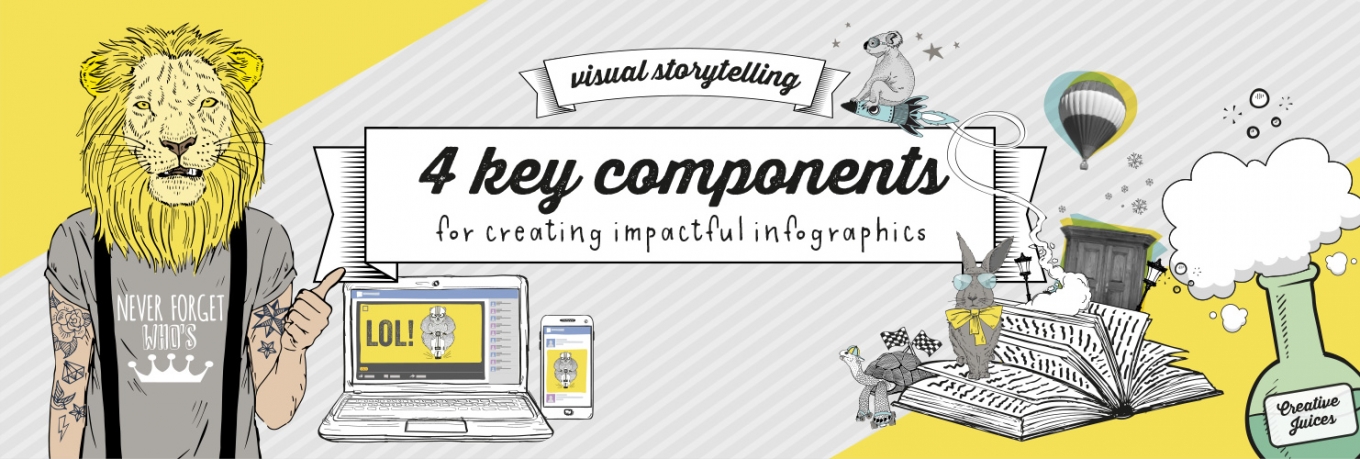Let’s cut to the chase. When it comes to your corporate comms, visual content is a winner.
It cuts through the chatter faster than a rocket full of monkeys. But why? What makes it so digestible? What are the key components of quality visual content? And what can we do to make sure it hits the spot?
We took part in a Newsweaver webinar where we shared our thoughts and some top takeaways on creating quality visual content and in particular, the invincible infographic. It was a rather popular one too, with over 1400 communicators registering to listen in.
PRACTICAL ADVICE AND KEY TAKEAWAYS
The webinar explored the benefits of taking a visual approach to communications, the science behind it and how to create great visual content. We’ve summarised those points for you in this article as well as creating a nifty little infographic to accompany it. You can also tune in to the recording for some great examples, suggestions, template ideas and a Q&A session with the comms community.
Read on to discover:
- Why visual communication is crucial and how it supports engagement
- Practical tips for creating powerful visual content
- Some simple tools to create your own striking visuals
- The key features of an awesome infographic
THE SCIENCE BEHIND VISUAL COMMS
Humans are hardwired to process visuals. They’re so much simpler than text-based comms so we absorb them much more quickly. Without them we’re missing a massive opportunity to communicate information.
For all you number loving folk out there…
- Humans process visuals 60,000 times faster than text
- Almost 50% of the brain is involved in visual processing
- 90% of the information transmitted to the brain is visual
- 65% of us are visual learners
That final point is of particular interest because in internal comms we’re often communicating something that people need to learn – perhaps a change in process or the way we need to work. Without visuals, we’re making it much harder for two thirds of our people to understand what we’re trying to convey.
Many social media channels we now use are built solely on visual content like Instagram for example. On social media, visual content really is the head honcho. In fact, research from Adobe found that posts containing an image had engagement rates over 600% higher than text only posts.
Did you know that infographics are three times more likely to be shared on social media than any other type of content? That’s because we’re programmed to absorb visual information. Hopefully by now, you’re getting the gist…. Visuals rock. And as internal communicators, we’re in a prime position to grab the attention of our employees with novel, unique and noticeable comms, engaging our people in a deeper, more impactful way.
FOUR COMPONENTS OF A GREAT INFOGRAPHIC
When crafted correctly, infographics provide the perfect platform to draw the audience in, presenting a topline flavour of the data that lies beneath and encouraging people to explore the deeper story. Before you begin, consider these four crucial components:
1 – A great story
You don’t need to include chapter and verse in your infographic, just have a defined back-story that your audience can go on to explore. Use your infographic to draw attention to your topic, be that a change programme, employee survey results or a business performance update.
2 – Compelling content
Once your story is in place you can distil it into compelling content that’s relevant and well-written. Grab the opportunity to do something different and add an interesting twist by stepping away from the corporate tone and tying the language up with your strong theme.
While not cast in stone, consider these seven elements of a well-built infographic structure:
- Heading – grab interest
- A strong intro – draw them in
- Stats and figures – set the scene and back up your argument
- 8 to 12 clear and concise points that outline your reason WHY
- A strong conclusion
- Hat tip your sources
- A call to action – what do you want them to do?
3 – A strong theme
‘Creativity is the power to connect the seemingly unconnected’
We love this quote because it demonstrates this point perfectly. As we touched on in point two, come up with a creative theme that ties in with your story. Avoid the obvious and add something fresh and appealing. Be brave, be bold and above all, be unpredictable.
4 – Shareability
This is all about communicating information so make it super easy to pass on. Create bite sized chunks of your infographic for people to share, paying particular attention to the format here – make sure it fits with your existing content.
DOING IT YOURSELF
Now we’re not suggesting that creating impactful visual comms is easy, far from it. And as an agency that specialises in making mundane comms marvellous, we’re happy to help. However, if you’re the creative type and would like to create your own infographics from scratch, there are plenty of super smart apps out there – Piktochart, Ceros, Canva and Venngage are some of the best. And it’s worth checking out their blogs too – they’re jam-packed full of useful articles and practical resources.
A WORD ON IMAGE LIBRARIES
We operate in the real world and we understand that budget and time won’t always allow you to create bespoke imagery. We’re not huge fans of stock images although we agree that there is a place for them. But take care. Be smart with the choices you make and use a good degree of common sense. Look for the ones that offer illustrations and chop them around (or get a great agency to do it for you), it doesn’t always have to be expensive, you can achieve a lot without spending too much money.
HINTS AND TIPS
We’d like to summarise some of the points above as well as offer our own unique take on crafting the perfect visual content. So here’s a list of useful hints and tips for you to take away…
Story and content
- Be clear about what you’re saying
- Keep things simple
- Avoid text and information overload
- Go beyond statistics and data – insights and opinion from individuals add massive credibility
- Use metaphors or comparisons
- Add personality
Creative and design
- Think about format – where will it be shared?
- Choose colours and typography wisely – consider illustration and imagery
- Create assets you can reuse/repurpose like animations or handouts – make the most of your efforts!
- Use metaphors or comparisons
- Be bold – it’s an opportunity to make your comms stand out
Other thoughts
- Have a clear end goal – know what you’re looking to achieve
- Don’t forget ‘search’ criteria and your intranet
- Upload a transcript or synopsis as ‘real’ text
- Think about distribution early in the process – what channels will be used to share the infographic?
- People love lists and numbers – 10 things you need to know about…’ makes a great headline
- Choose a quirky illustration style
- Use humour – make them smile
AND FINALLY…
In the unlikely event that you needed a little more convincing about the epic power of visual content…
‘People remember 10% of what they hear, 20% of what they read, and 80% of what they see.’
Go make it marvellous!

















